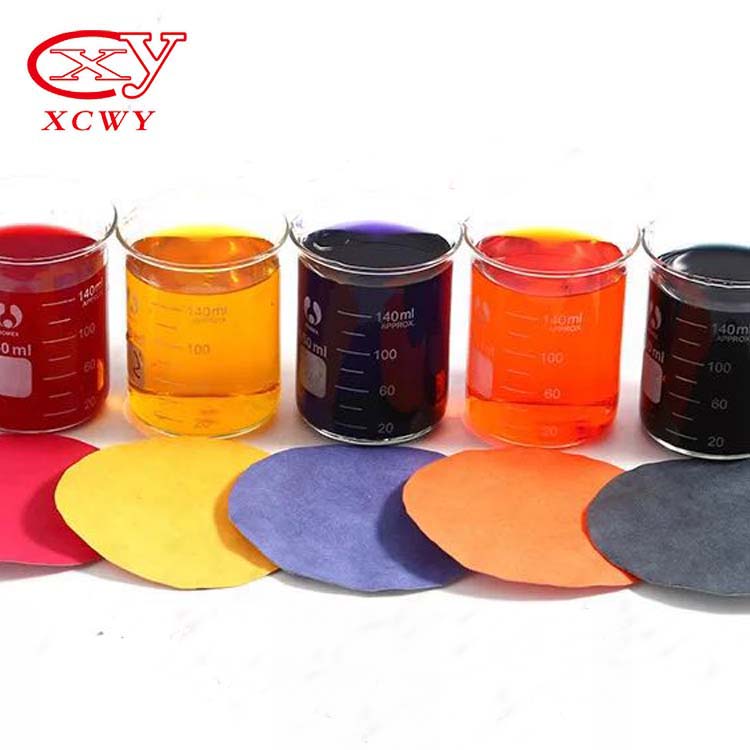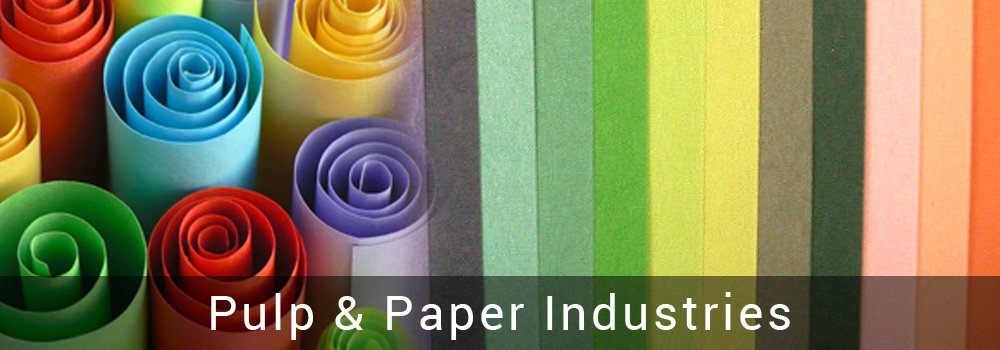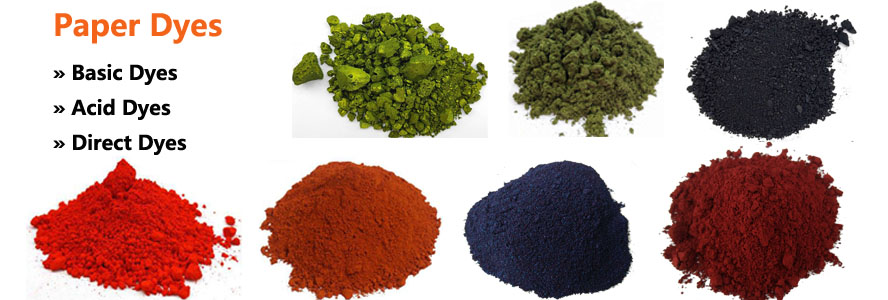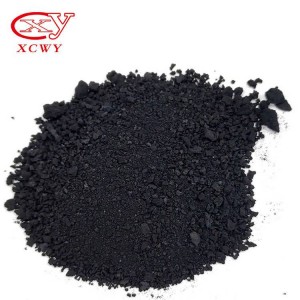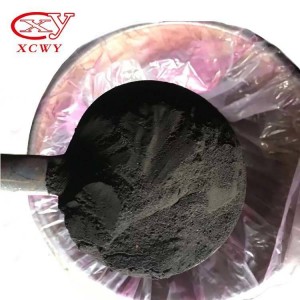Paper Pulp Dyestuff
In recent years, with the continuous improvement of people’s living and cultural level, more and more people like to use color paper, which makes the demand for color paper increasing. In order to meet the social needs, many paper mills will improve the production process to produce color paper.
The production method of color paper is mainly to put powder dyes into the pulp and then make the paper with color on the paper machine. Thus, the paper pulp dyes play an important role during the color paper production.
The main paper pulp dyestuff used in papermaking are auramine yellow O (yellow for papermaking, firepaper dyeing, kraft paper dyeing), Direct Scarlet 4BE (firecracker paper dyeing),basic rhodamine b ( book paper coloration), acid scarlet GR, direct yellow brown MD (yellow board paper dyeing), direct dark brown MM (tea board paper dyeing), basic magenta blue (newspray paper dyeing, printing paper coloration), basic magenta green (bookpaper dyeing, printing paper dyeing), basic fuchsin, direct fast black, direct lake blue 5B (cardboard dyeing), basic violet 5BN (book paper), fluorescent whitening agent VBL (toilet paper whitening), direct frozen yellow G (toilet paper coloring, white board paper coloring), basic orange crystals (kraft paper dyeing).
Our paper pulp dyestuff features
» Very brilliant shades
» High lightfastness
» Very good dyeing properties
» Good reproducibility
After choosing the high quality paper pulp dyestuff, what other factors can effect your paper pulp dyeing effect?
1. Methods: There are two dyeing methods: dry dyeing and wet dyeing. Dry method is a dyeing method to put powder paper pulp dyestuff directly put into pulp, while wet method is to dissolve and disperse the dyes in hot water at a certain temperature, and then add the dissolved dyes to the pulp for dyeing. It was found that wet dyeing had better effect than dry dyeing. The dyes were fully dissolved in hot water of 80℃ to 90℃ for wet dyeing. It can improve the dye uptake rate, dyeing uniformity and reduce the amount of dyes.
2. Temperature: Increasing the dyeing temperature will enhance the dissolution and dispersion of dyes in water, which is beneficial to the uniform and firm combination of dyes with fibers, thus improving the dyeing effect. In production, the temperature of pulp during dyeing can be increased according to the actual situation to enhance the dyeing effect.
3. Water quality: The dyeing of pulp is carried out in water, so the water quality also has a certain effect on dyeing. Water with high hardness and high suspended matter content will have a negative effect on dyeing. In the process of dyeing pulp, the treatment of production water should be strengthened, and impurities in pulp should be removed as far as possible.
4.PH quality: all paper pulp dyestuff have their appropriate pH range. One important factor of achieving the desired dyeing effect is to strictly control the pH value. For most dyes, the retention rate of pH value between 4.5 and 5.5 is high and the dyeing effect is good.
Contact person: Miss Jessie Geng
Email:jessie@xcwychem.com
Mobilephone/Whatsapp: +86-13503270825

